43 sand filter septic system diagram
How do septic system sand filters work? - Express Wastewater ... Unlike conventional septic systems, sand filters septic systems are quite beneficial and can work well in areas with less soil or high groundwater. Intermittent | Affordable Septic Systems Intermittent Sand Filters (ISF) are an ideal advanced treatment solution where high groundwater, poor soils, or other site constraints rule out conventional septic systems. Tucked neatly underground, modern ISFs can be planted over with lawn or flowers to blend into your landscaping.
Sand Filter Septic System Explained - DoItYourself.com A sand filter septic system is a good solution for waste water treatment problems in areas with insufficient soil. These systems consist of the septic tank, pump chamber, sand filter and drain field. Sand is used to make up for the inadequate amount of soil at the site. The sand filter may consist of a large concrete box filled with sand.
Sand filter septic system diagram
PDF Single-Pass Sand Filters - University of Minnesota Single-pass sand filters are an effective way to treat wastewater in an onsite application. The sand filter system has been used for more than 30 years across the United States and there is significant design, treatment, and maintenance experience with these systems. Sand filter systems are very reliable in treatment of BOD, TSS, and fecal ... Sand Filter Septic System Maintenance - DoItYourself.com A sand filter septic system works very much like a standard septic system, with the exception that there is limited land area available, so instead of running off into a leach field, it drains through a sand bed back into the environment. Sand Mound Septic System: A Guide To Maintenance and Function sand mound septic system. Septic tanks with gravity flow drain fields have been used for many years in areas not served by public sewers. Unfortunately, not all soil and site conditions are well suited for these standard systems. To protect public health and water quality, non-standard systems are often used in areas where standard systems cannot assure safe sewage treatment.
Sand filter septic system diagram. Bottomless Sand Filter - On-Site Sewage Facilities (OSSF) Bottomless sand filters are similar in several ways to the single-pass sand filter. However, BSF media may be finer textured and less uniform. Typically bottomless sand filter media have an effective size of 0.33 mm and a uniformity coefficient of 2.5 to 4. In addition, they lack a bottom filter liner and underdrain. Wastewater is applied under low pressure to the top of a 2 to 3 foot deep bed ... OSS Homeowner's Manual: Sand Filter System - King County A typical sand filter system has six main parts: 1. The septic tank with its outlet baffle filter (see SEPTIC TANK PUMPING and TANK. BAFFLES),. 2. The pump ... Recirculating Sand Filters (RSF) : Barnstable County ... The system is composed of a standard septic tank, a pump chamber, the sand filter, and a soil absorption system or SAS. The theory behind the recirculating sand filter is simple. Septic tank effluent is pumped from the pump chamber to the top of the sand filter. As the effluent passes through the sand filter, the ammonium-nitrogen is converted ... Types of Septic Systems | US EPA Recirculating Sand Filter System. Sand filter systems can be constructed above or below ground. Effluent flows from the septic tank to a pump chamber. It is then pumped to the sand filter. The sand filter is often PVC-lined or a concrete box filled with a sand material. Effluent is pumped under low pressure through the pipes at the top of the ...
Sand Filter Septic System - Stangland Septic A typical sand filter system has four working parts: The septic tank. The pump chamber with the pump. The sand filter. The disposal component including a drainfield (or possibly a mound) with its replacement area. The Septic Tank The typical septic tank is a large buried container made of concrete, fiberglass or polyethylene. Apns For Free Android [9CQVON] Apps for Android. Free NOOK Reading App- available for your iPhone, iPad, Android devices & Windows 8 tablets. You will need: A Mac or Windows computer (see system requirements) An internet connection; You will make a mobile app, so it's fun to see it run on a phone or tablet while you build the app (and after!). Wastewater Technology Fact Sheet: Intermittent Sand Filters The ISF system used in this study had the following components: a conventional septic tank followed by a separate pump vault; a plywood structure with a 30 mm PVC liner for the filter and appurtenances; 24 inches deep of carefully graded and clean sand; a gravel over-layer and under-layer containing the pressurized piping manifold to distribute ... How Your Septic System Works w/ Diagrams| SepticTankPro.com Recirculating Sand Filter Systems. In this system, effluent flows from the septic tank to a pump chamber. It is then pumped to the sand filter. The sand filter is typically a PVC-lined or a concrete box filled with sand. Effluent is pumped under low pressures through the pipes at the top of the filtering system.
Sand Filters - Purdue University College of Engineering Sand filters treat wastewater using naturally occurring physical, biological, and chemical processes. They are one of the best options for additional onsite treatment where septic tank/soil absorption systems have failed or are restricted due to high groundwater, shallow bedrock, poor soils, or other site conditions. OSS Homeowner's Manual: Sand Filter System A typical sand filter system has six main parts: 1. The septic tank with its outlet baffle filter (see SEPTIC TANK PUMPING and TANK BAFFLES), 2. The pump chamber with its pump, controls, and alarm system (see SEPTIC TANK PUMPING and PUMP TANK AND PUMP CONTROLS), 3. The sand filter itself (see SAND FILTER AND SITE INSPECTION), 4. What Is a Sand Filter Septic System and How Does It Work? A sand filter septic system is a good option for wastewater treatment issues in any areas that have insufficient soil. Components of these systems include the septic tank itself, the sand filter, the pump chamber and the drain field. Septic system companies fill in the area with sand to make up for a lack of soil, often by using a large ... Sand Filter Treatment Systems - Geelong Septic Tanks ... Sand Filter Treatment Systems are secondary treatment systems, as they require the primary treatment of effluent by a septic tank. They feature an underground bed of sand, which receives the effluent from the septic tank. Sand is a highly effective, naturally absorptive material that can treat effluent to a very high standard.
PDF SAND FILTER SYSTEM GUIDE - Deschutes County, Oregon sand filter. Sand filters produce high quality effluent, significantly reducing fecal coliform bacteria, removing organics, and nitrifying ammonia. Septic tank effluent is pumped to the top of the sand filter bed into distribution laterals, which releases the effluent through orifices in the pipe.
Sand Filter - an overview | ScienceDirect Topics The rapid and upflow sand filters use flocculant chemicals to work effectively whereas the slow sand filters do not require chemicals. Conventional filtration systems treat water by passing it through granular media (e.g., sand) under gravity or pumped pressure at filtration rates of 2-10 gpm sf −1 (5-25 m h −1 ) ( Klute and Neis, 1983 ...
Recirculating Sand Filters & Sand Beds Septic Systems ... In a sand filter septic system, the septic tank or aerobic unit effluent is intermittently spread across the surface of a bed of sand through a network of distribution lines. Collector pipes beneath the filter collect treated effluent after it has passed through the sand. (2) Site Requirements for Sand Filter Bed Septic Systems
Onsite Wastewater Treatment Systems: Sand Filters - Texas ... Sand filters are beds of granular material, or sand, drained from underneath so that pretreated wastewater can be treated, collected, and distributed to the final treatment and dispersal system. They are normally used to polish effluent from septic tanks or other treatment processes before it is distributed on the land.
haptotherapie-west.nl We continue to lead the way for natural and composite wood materials. Hp Desktop Walmart. Mercury Parts Catalog. 2019 2 Comments on 1000 Gallon Septic Tank Diagram A septic tank is an underground chamber made of concrete, fiberglass or plastic through which Schematic of a septic tank schematron.
Page Not Found Quality Assured: Constructed on-site (not-prefabricated) usingconcrete tank design example an open top concrete tank is to have three chambers each measuring 2060 as shown the wall a septic tank is part of a small scale sewage treatment system often referred to as a septic system tank pdf free download, design construction and operation of the ...
Intermittent Sand Filter Septic Systems Design & Model ... Intermittent sand bed and sand filter septic system designs, specifications, model regulations. This article uses the New York State wastewater treatment standard for individual household septic systems to provide an example of state regulated design and installation of intermittent sand filter septic systems.
How should I interpret these septic system diagram ... We bought a house built in 1996 with a sand filter septic system. We got the following diagram of the system: but it might as well be ancient runes to us.
PDF Construction Guidelines for a Single Pass Sand Filters Construction Guidelines for a Single Pass Sand Filters A. General In an intermittent sand filter treatment system, wastewater receives primary treatment in the anaerobic environment of a septic tank, secondary treatment in the aerobic environment of a sand filter and is disposed of in soil trenches where additional biodegradation occurs.
Septic tanks with sand filter A septic tank with sand filter produces a high quality effluent that can be used as irrigation for garden and lawns. This low-maintenance septic solution rarely, if ever, needs ongoing servicing. When you're ready to install your sand filter system, leave the dirty work to us.
Mound Septic System Diagram - schematron.org mound system served with septic tank effluent (not to scale) figure - detailed schematic of a sand mound system with 3 lateral rows and 6 total laterals. The purpose of the design is to overcome site limitations that prohibit the use of conventional trench on-site sewage disposal systems.Mound system - WikipediaMound system - Wikipedia
5 Different Types Of Residential Septic Systems (Pros and ... 3: Conventional Pump System. In this flow diagram, we take another step. Between the distribution box and septic tank, there is a pump tank. Why use a pump, you ask? This is the preferred system if your drain lines are going to be uphill from where your tank is. These systems can use gravel or gravel-less options for the drain lines. Pros
PDF Fact Sheet 3: Septic Tank With Sand Filter Septic t ank with Sand Filter 4 3.6 who to contact: produced and Funded By: * all waStewater iS to Be retained on the property 3.5 HISTORIC SAND FILTER SYSTEMS: If you have an ageing sand filter incorporated into your domestic wastewater system and a small allotment, it is likely that this system was designed to
PDF Understanding and Caring for Your Sand Filter System understand your sand filter system and keep it operating safely at the lowest possible cost. A typical sand filter system has four working parts: chamber rises above the "ON" float. The alarm 1. The septic tank. 2. The pump chamber with the pump. 3. The sand filter. 4. The disposal component including a drainfield (or possibly a mound) with its
(a&b). Schematic diagram of septic tank and sand filter ... This paper aims at presenting a case study of onsite greywater treatment in small rural community in Jordan using septic tank followed by intermittent sand ...
Intermittent Sand Filter (ISF) Overview (DVD 932MB) - YouTube This video explains how an intermittent sand filter (ISF) works in a septic system. It also provides guidelines for proper installation and maintenance of IS...
Fact Sheet: Septic Systems - Hamilton County Public Health Septic Systems - Subsurface Sandfilters. Distribution Box: This box, located at the inlet to the sandfilter, divides the effluent flow from the septic tank and spreads it over the surface of the filter. Effluent from the septic tank either flows by gravity or is pumped into this box. Perforated Leaching Pipes: These pipes distribute effluent over the sandfilter bed.
Septic System Owner's Guide | NC State Extension Publications Mar 27, 2022 · Many different kinds of septic systems are used in North Carolina, but most of the nearly 2 million systems in use throughout the state are slight modifications of the conventional septic system. This system has a septic tank and a drainfield with gravel-filled trenches (usually two to six trenches).
Sand Mound Septic System: A Guide To Maintenance and Function sand mound septic system. Septic tanks with gravity flow drain fields have been used for many years in areas not served by public sewers. Unfortunately, not all soil and site conditions are well suited for these standard systems. To protect public health and water quality, non-standard systems are often used in areas where standard systems cannot assure safe sewage treatment.
Sand Filter Septic System Maintenance - DoItYourself.com A sand filter septic system works very much like a standard septic system, with the exception that there is limited land area available, so instead of running off into a leach field, it drains through a sand bed back into the environment.
PDF Single-Pass Sand Filters - University of Minnesota Single-pass sand filters are an effective way to treat wastewater in an onsite application. The sand filter system has been used for more than 30 years across the United States and there is significant design, treatment, and maintenance experience with these systems. Sand filter systems are very reliable in treatment of BOD, TSS, and fecal ...
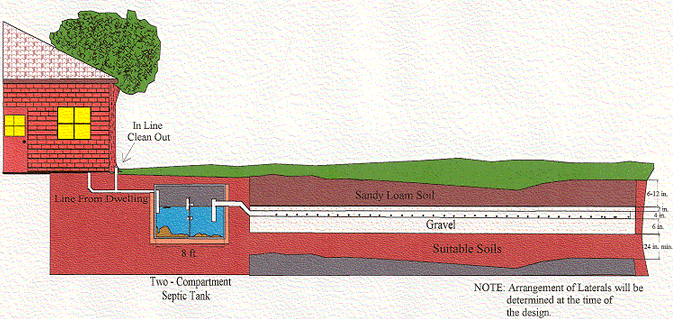
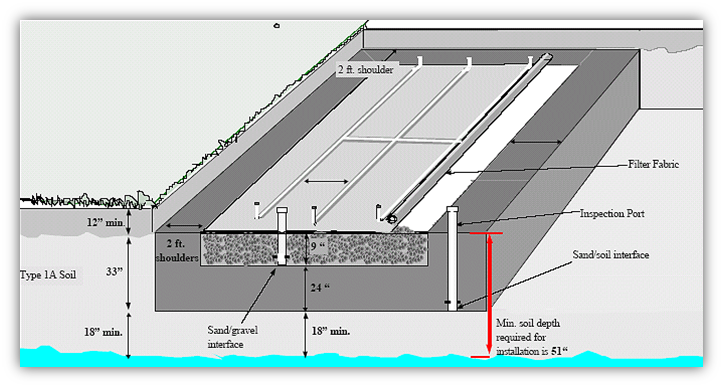



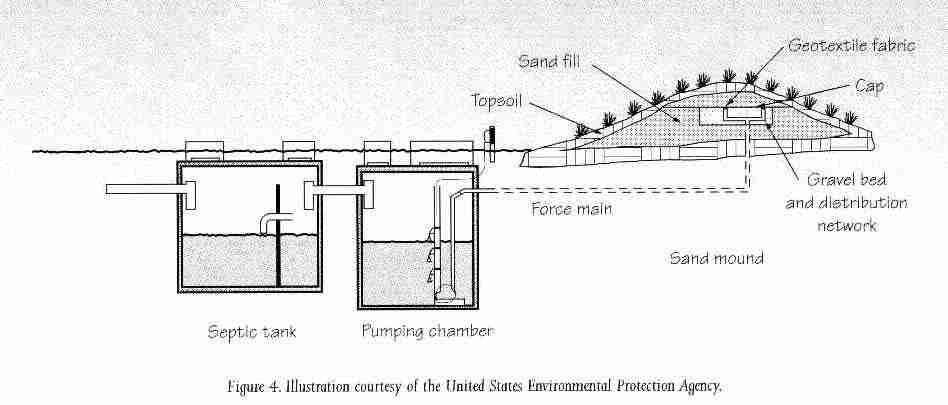
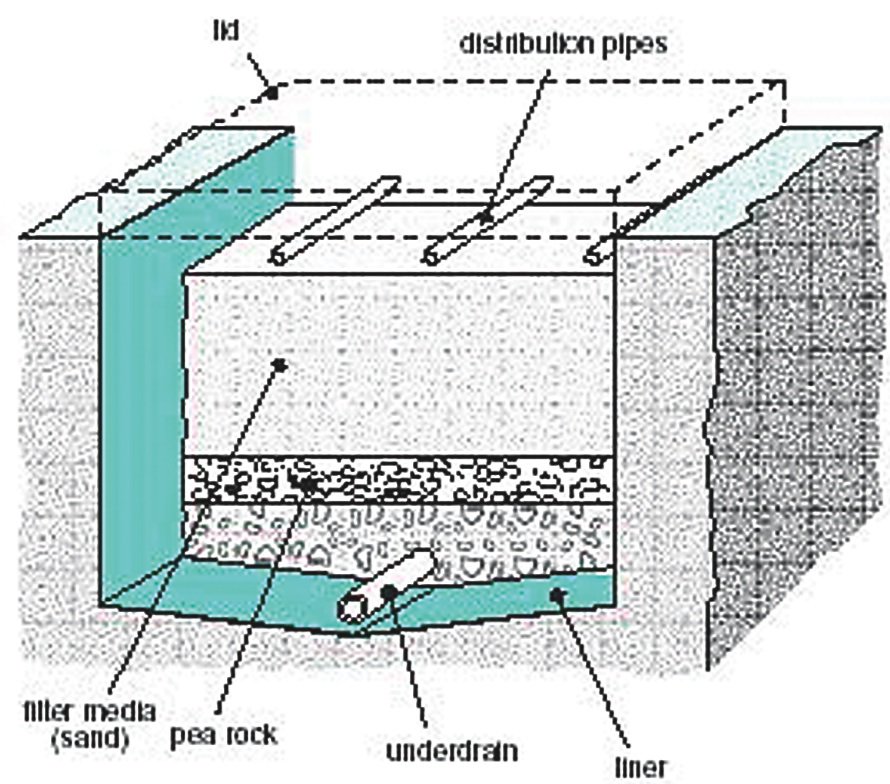
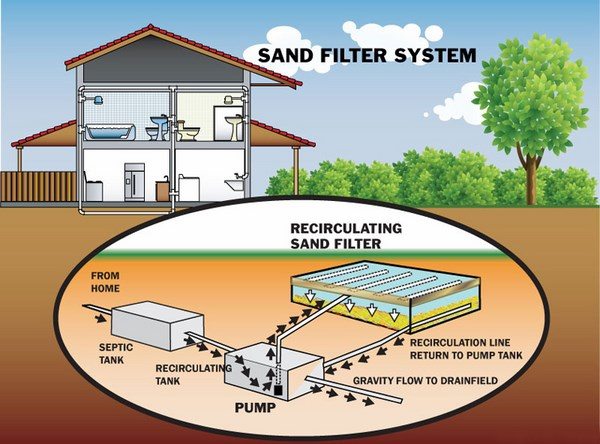


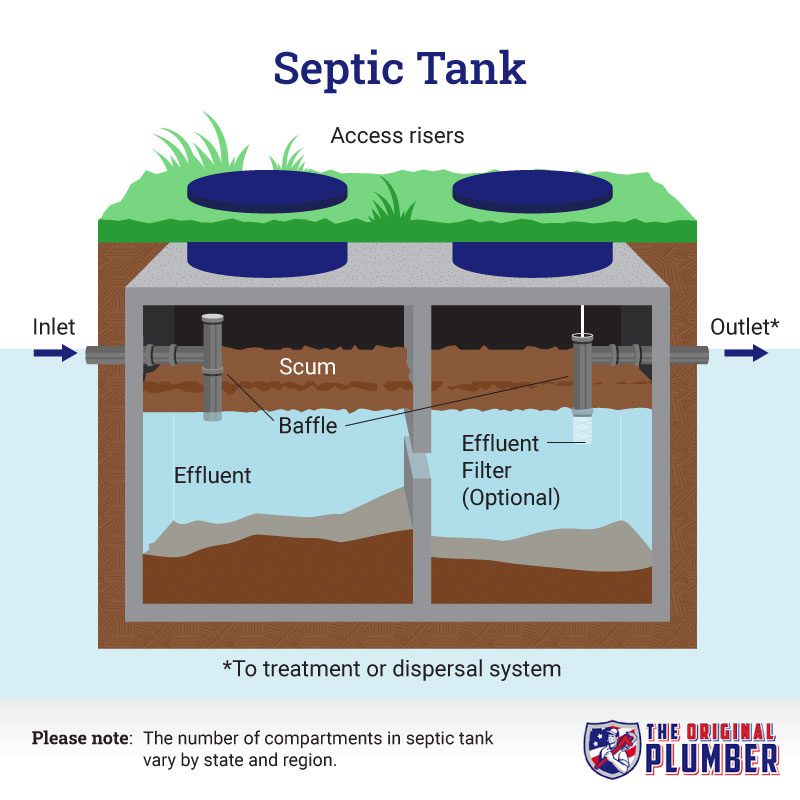
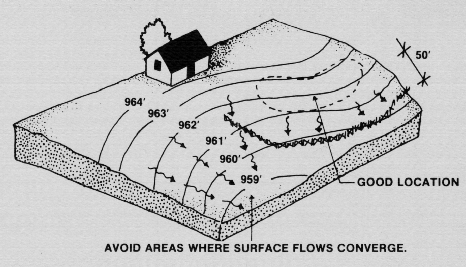









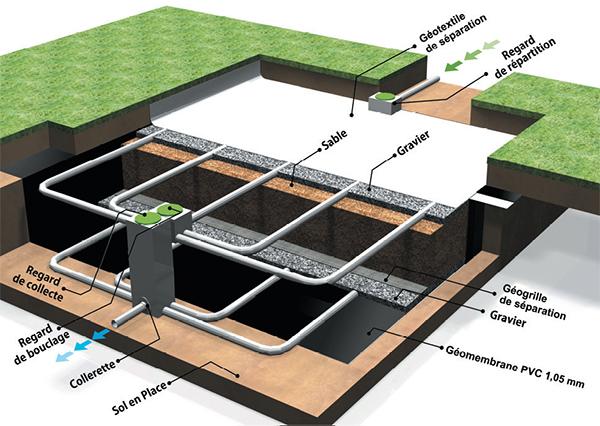



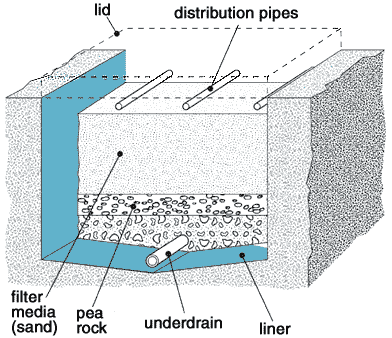


Comments
Post a Comment